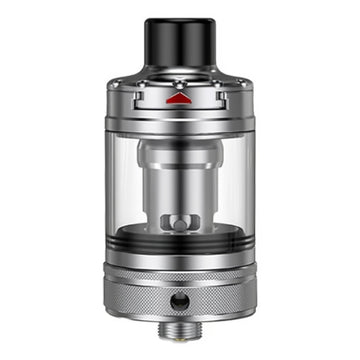Quitting vaping can be a significant milestone in your journey toward better health and well-being. If you've reached your personal goal and are ready to quit, understanding the side effects of nicotine withdrawal and knowing how to manage them can help you successfully navigate this transition. Here’s a comprehensive guide on how to quit vaping and manage the side effects that may come with it.
Steps to Quit Vaping
- Set a Quit Date: Choose a date within the next two weeks to stop vaping. This gives you time to prepare without losing motivation.
- Identify Your Triggers: Recognise situations, emotions, or habits that make you want to vape. Understanding these triggers helps you develop strategies to avoid or cope with them.
- Gradually Reduce Nicotine Intake: If you're not ready to quit cold turkey, gradually reduce the nicotine strength in your e-liquid. This can help minimise withdrawal symptoms.
- Find Alternatives: Replace vaping with healthier activities. Exercise, hobbies, and spending time with friends and family can help distract you from cravings.
- Seek Support: Tell your friends and family about your plan to quit. Consider joining a support group or talking to a counsellor who specialises in addiction.
Side Effects of Quitting Nicotine
When you quit vaping, you may experience withdrawal symptoms as your body adjusts to the absence of nicotine. These side effects can vary in intensity and duration but typically include:
Physical Symptoms
-
Headaches: Common during the first few days as your body adjusts.
-
Dizziness: Caused by the sudden lack of nicotine
- Increased Appetite: Nicotine suppresses appetite, so quitting can make you feel hungrier.
- Insomnia: Difficulty sleeping is a frequent withdrawal symptom.
- Constipation: Changes in metabolism can affect digestion.
Psychological Symptoms
-
Irritability & Mood Swings: Nicotine affects neurotransmitters, so quitting can lead to mood changes.
- Anxiety & Depression: Common emotional responses to withdrawal.
- Difficulty Concentrating: Your brain is adjusting to the lack of nicotine stimulation.
Managing Withdrawal Symptoms
- Stay Hydrated: Drink plenty of water to help flush nicotine out of your system and alleviate some physical symptoms like headaches and dizziness.
- Eat a Balanced Diet: A healthy diet can help manage increased appetite and stabilise your mood. Focus on fruits, vegetables, whole grains, and lean proteins.
-
Exercise Regularly: Physical activity can reduce stress, improve your mood, and help you sleep better. Even a short walk can make a difference.
-
Practice Relaxation Techniques: Mindfulness, deep breathing exercises, and meditation can help manage anxiety and mood swings.
-
Use Nicotine Replacement Therapy (NRT): If withdrawal symptoms are severe, consider NRT products like patches, gums, or lozenges. They can ease the transition by gradually reducing nicotine dependence.
-
Get Adequate Sleep: Ensure you’re getting enough rest. Create a relaxing bedtime routine and avoid caffeine and screens before bed.
- Stay Busy: Keeping yourself occupied with activities and hobbies can distract you from cravings and withdrawal symptoms.
- Seek Professional Help: If you’re struggling to manage withdrawal symptoms, consult a healthcare provider. They can offer additional resources and support.
Conclusion
Quitting vaping is a commendable goal. While the journey may be challenging due to nicotine withdrawal symptoms, being prepared and proactive can make the process smoother. Remember to set a quit date and to identify your triggers. Manage withdrawal symptoms by staying hydrated, eating well, exercising, and seeking support when needed. With determination and the right strategies, you can overcome vaping and enjoy a nicotine-free life.




















